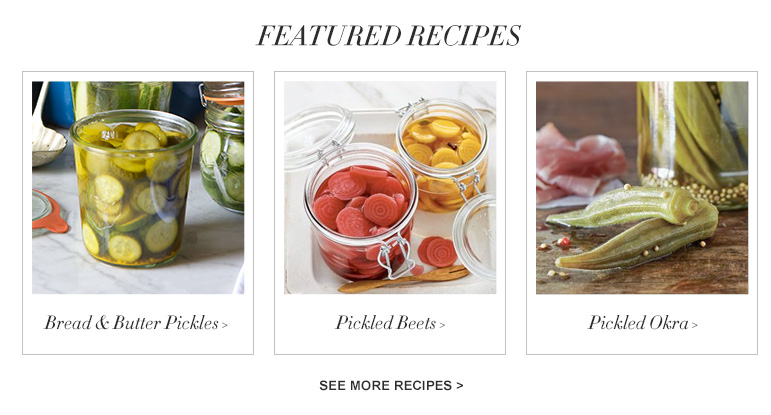

Make jars of crunchy, flavorful pickles at home — here are guidelines and key ingredients you need to get started.
Produce pickled at its peak of freshness will invariably yield the best result, with the most crispy texture. Vegetables grown in your own garden make the most delicious pickles; otherwise, look to the farmers' market for fresh vegetables. Fast is equally important—make your pickles as soon as possible after picking or purchasing your produce.
SaltSalt tempers the balance of flavors in many brines, and in some cases it helps draw water out of vegetables, such as cucumbers, to improve their texture. Kosher salt and pickling salt, which are nearly identical, are the two main types of salt used for making shelf-stable pickles. Do not substitute common table salt.
FlavoringsPickling spices—the unique and flavorful mix of herbs and spices added to the brine—play the most creative and distinctive role in making pickles. Different combinations of herbs and spices help create pickles with distinctive flavors, and experimenting with these elements is where you can make your mark as a pickler. As you gain confidence, alter recipes to suit your tastes. For an aromatic approach, you might include as many as six or eight spices—such as whole allspice, peppercorns, dill or mustard seeds, and bay leaves. You can purchase pickling spice blends or make your own. As a starting point, try our Homemade Pickling Spice recipe.
Properly sealed jars of pickles have a long shelf life because they have achieved an acceptable level of acidification, the pH of the contents has been stabilized and all bacteria have been eradicated. Acid in pickling takes two forms: vinegar and citric acid. Vinegar stabilizes the pH levels of pickled vegetables. Different vinegars have different degrees of strength, or grain; the ones most commonly used in pickling have a grain strength of 5 or 6 percent. Avoid using vinegars with a grain strength lower than what a recipe requires, as the resulting pickles may not acidify properly. Citric acid is derived from the juice from citrus: lemon, lime, and orange. It brightens and embellishes the flavors of pickles and complements other ingredients, but it doesn't usually provide the basis for acidification.
Heat penetration is another factor in acidification. Brines are brought to a boil (212°F) and poured quickly into jars before their temperature drops below 195°F, which typically takes a few minutes. Jars remain in the boiling-water bath for a specified length of time to ensure that the core temperature of the contents reaches a level that will kill any bacteria present. If the jars have been properly sealed, the combination of vinegar and heat penetration will kill bacteria and the contents will be safe to eat.








